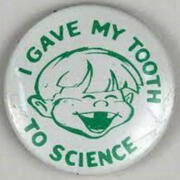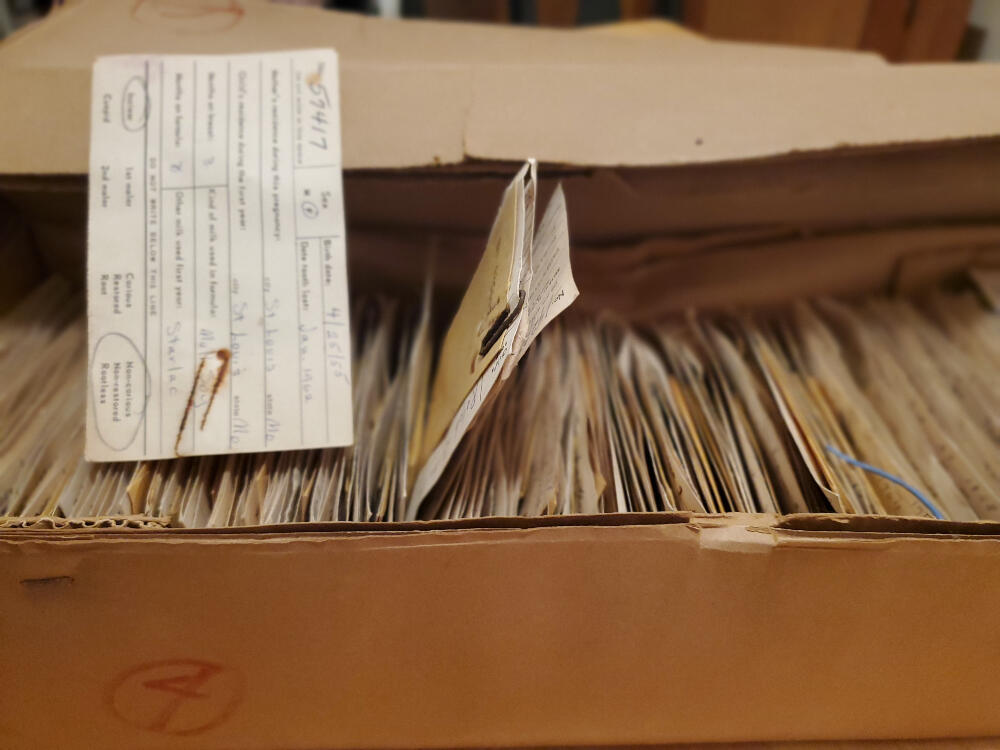
It turns out, a lot! Project 1 is using baby teeth collected during the 1950s under the St. Louis Tooth Study. That project was established to look at the impacts of radiation on children from nuclear testing occurring at the time – probably one of the first examples of Citizens Science in action. Nearly 320,000 teeth were collected nationwide to support the study, and in 2001, some 90,000 “leftover” teeth were accidentally found and given to Dr. Joe Mangano, founder of the Radiation and Public Health Project.

In 2015, Dr. Mangano, now a collaborator on Project 1, was talking to Dr. Marc Weisskopf, PI for Project 1, at a conference, and mentioned the remaining teeth in storage. That led to an idea. What if we could track down the owners of those teeth, and ask them to participate in a study on cognitive outcomes using simple-to-use and administer tools available on the internet (enter Dr. Laura Germine, Technical Director, McLean Institute for Technology in Psychiatry and creator of one of the first online  neuropsychological laboratories in 2005, which later became TestMyBrain.org, a platform that has attracted over 2.3 million research participants, including those in Project 1). We could then use the teeth to measure exposures to mixtures of metals, and, in fact, define quite precisely pre-and early post-natal exposures (enter Dr. Brian Jackson and colleagues at the Dartmouth Trace Element Analysis Laboratory using laser ablation technology.
neuropsychological laboratories in 2005, which later became TestMyBrain.org, a platform that has attracted over 2.3 million research participants, including those in Project 1). We could then use the teeth to measure exposures to mixtures of metals, and, in fact, define quite precisely pre-and early post-natal exposures (enter Dr. Brian Jackson and colleagues at the Dartmouth Trace Element Analysis Laboratory using laser ablation technology.
What start ed as a side discussion at a conference became Project 1 under our MEMCARE SRP Center. As of this writing, trainee Kayleigh McAlaine has completed the cataloguing of some 100,000 teeth representing approximately 36,000 unique individuals. As of January 2022, 546 men and 671 women have completed the online survey and cognitive testing and the teeth sent to Dartmouth for metals analysis. Stay tuned for an upcoming interview with researcher Tracy Punshon, who will describe how it is possible to very clearly distinguish pre- and post-natal exposures from baby teeth!
ed as a side discussion at a conference became Project 1 under our MEMCARE SRP Center. As of this writing, trainee Kayleigh McAlaine has completed the cataloguing of some 100,000 teeth representing approximately 36,000 unique individuals. As of January 2022, 546 men and 671 women have completed the online survey and cognitive testing and the teeth sent to Dartmouth for metals analysis. Stay tuned for an upcoming interview with researcher Tracy Punshon, who will describe how it is possible to very clearly distinguish pre- and post-natal exposures from baby teeth!